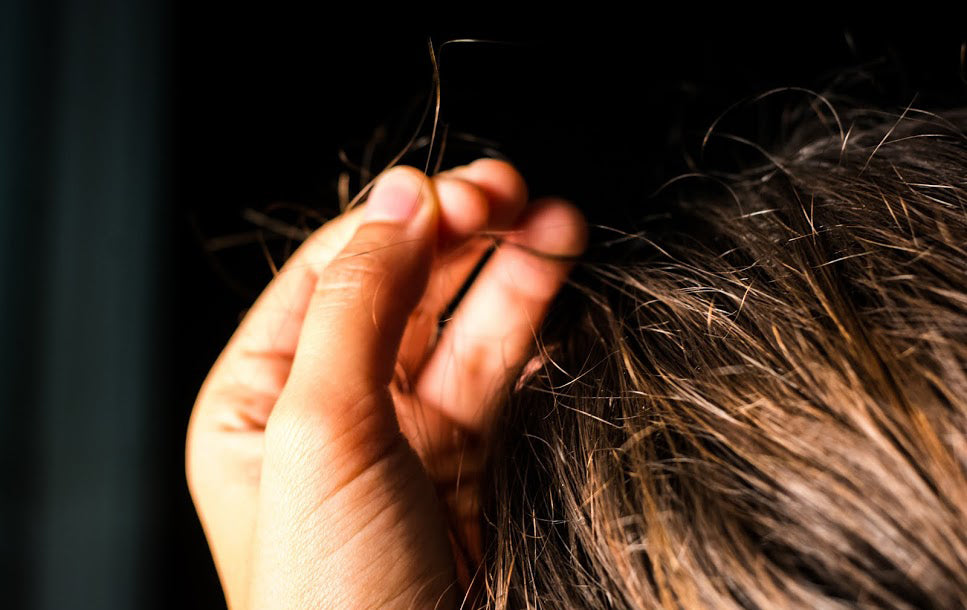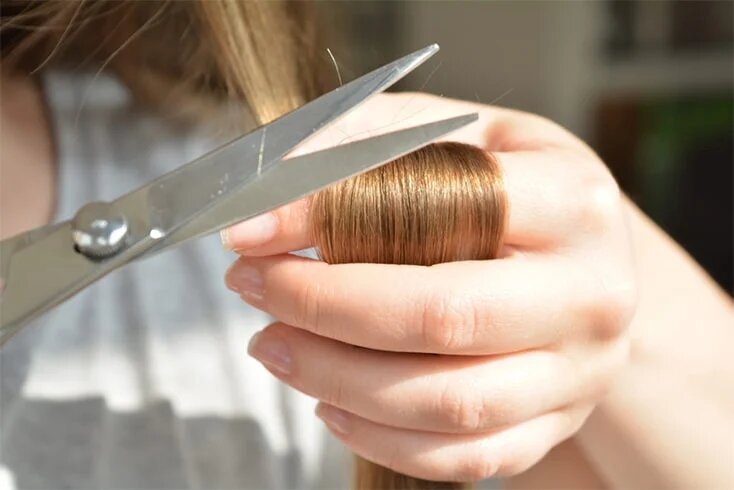What is trichoclasia?
Trichoclasia is one of several disorders of the hair shaft that results in broken or damaged strands, such as split ends . Trichoclasia is a fracture of the hair shaft in a hair that still has a cuticle . The cuticle is intact and shows no abnormalities. (Read our article on hair structure for more information)
Trichoclasia usually occurs as a result of trauma to the hair , usually from excessive or vigorous washing, brushing, or styling. The condition is usually patchy in nature and can be reversed by adopting different hair care techniques. Sometimes Trichoclasia occurs as a result of excessive hair pulling (especially in people with trichotillomania).
Hair pulling and vigorous hair care stress the hair, leading to breakage and fracture. This can make hair look thin or brittle. Although Trichoclasia is quite common, it is reversible and temporary in nature and is not due to an underlying disease.
Diagnosis of trichoclasia
There are many different types of hairline fractures . It is therefore necessary to know the telltale signs of trichoclasia before diagnosing it.
Trichoclasia is one of the few types of hair fracture that does not indicate a problem with the cortex or cuticle of the hair . Hair breaks as a result of trauma to the hair, resulting in it breaking on one side only. The hair is still attached to the main strand on the other side.
Tips to avoid Trichoclasia
Trichoclasia is mainly due to a lack of hair care. Use these tips to reduce your risk of trichoclasia :
1. Avoid the use of chemicals
Perming, bleaching, coloring and treating hair can expose your hair to potentially harmful chemicals. This can lead to split ends and breakage - so it's best to avoid exposing your hair to these chemicals as much as possible.
2. Comb wet hair
Wet hair can break more easily than dry hair, so you need to be extra careful when brushing it. Invest in a wide-toothed comb that is less likely to damage your hair when detangling after a shower.
3. Detangle carefully
If you encounter a difficult knot or tangle in your hair, it may be tempting to pull the brush through it. But this can break your strands or even pull hair out of its follicle , so avoid doing this as much as possible. Instead, use conditioner and your hands to gently detangle tangles before brushing them out.
4. Wash your hair gently
Washing your hair too rigorously can also cause split ends. Gently massage your hair to ensure it stays intact while you shampoo and condition it.
5. Don't wash your hair too much
Your technique in the shower isn't the only hair washing faux pas when it comes to caring for your tresses. You should also consider how often you wash your hair. Daily washing is too frequent; 3 to 4 times a week is more than enough.
6. Adapt your sleeping habits
Movements during sleep can contribute to split ends and trichoclasia . It can be difficult to change your sleeping habits, but you can use a satin pillowcase to reduce the risk of damage while you sleep.
7. Be careful of the heat
Heat styling can cause many types of hair shaft fractures . If you want to use a straightener, blow dryer or curling tong, prep your hair with a serum or protective spray before applying heat.
Suggested Treatments for Trichoclasia
In case of trichoclasia , prevention is better than cure. Changing your routine by following the tips above can help prevent trichoclasis in the first place. Gentle treatment and careful hair care can also repair minor cases of trichoclasia .
If your hair is already suffering from breakage , fractures, and split ends , it's a good idea to go to the salon for a cut. Trimming your split ends can strengthen your hair and give it a new lease of life.
If you are concerned about the extent of your hair breakage, you can also consult a trichologist. Trichologists are doctors who specialize in treating hair problems . He will be able to reassure you about the condition of your hair or develop a plan with you to resolve the problem.
Diseases similar to trichoclasia
Trichoclasis is one of several types of hair shaft fracture. Other types may indicate underlying issues or problems with the hair cuticle itself, so it's important to understand the symptoms of each condition.
Other conditions of the hair shaft include:
Trichorrhexis nodosa ( Trichorrhexis nodosa)
This is the most common type of hairline fracture . Trichorrhexia nodosa appears as a frayed curl in the middle of the hair shaft, and occurs when the hair cuticle is completely lost.
Most cases of trichorrhexia nodosa are caused by trauma to the hair and can be avoided or minimized by following the tips above. However, certain congenital conditions that result in abnormal keratin formation may also increase the risk of trichorrhexia nodosa .
Trichoptilosis
Trichoptilosis is the medical term for true split ends. When the hair cuticle eventually wears down, the hair splits in two at the end, resulting in two split ends growing from the same hair shaft.
Like trichoclasia , trichoptilosis is usually caused by physical trauma to the hair. This includes excessive exposure to heat, excessive washing, and aggressive brushing.
Trichorrhexis Invaginata
Also known as bamboo hair, trichorrhexis invaginata is a hair with a characteristic knotty appearance. Each strand contains bumps or beads similar to those seen on a bamboo stalk.
Trichorrhexis invaginata is a rare disorder of the hair shaft. Most cases are seen in patients with Netherton syndrome.
Can trichoclasia cause hair loss?
If left untreated, any disorder or fracture of the hair shaft can eventually cause the hair to become weak and break easily. It may not be true hair loss, but it can give the appearance of thinning or unhealthy hair.
How can trichology help you?
If you are concerned about the amount of broken and damaged hair, you may want to consult a trichologist . Addressing your problem early can help prevent your hair from becoming dry and brittle, so it is best to speak to a specialist.
Book a free consultation with a trichologist at Clinique Capilia to discuss your concerns regarding trichoclasia or other hair shaft disorders.
Also find out what trichoscopy is!



